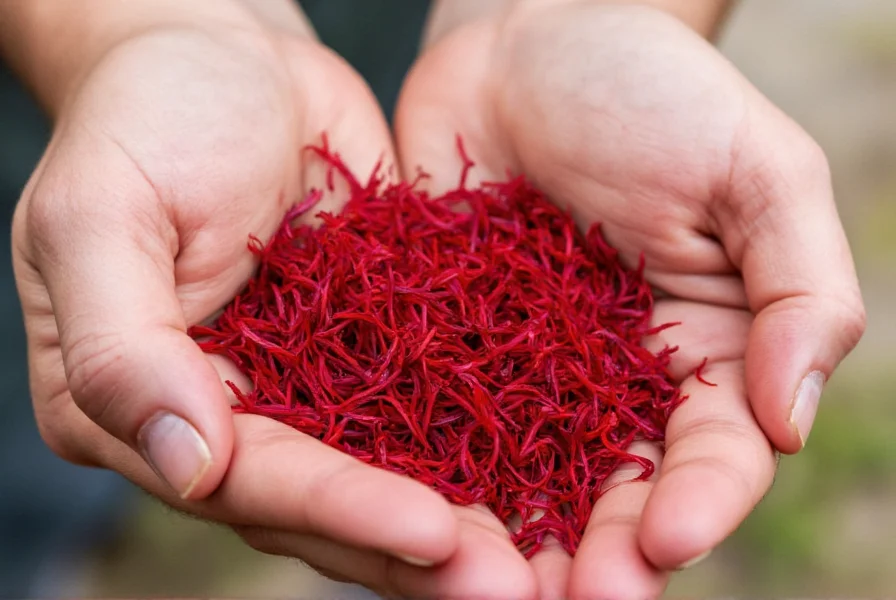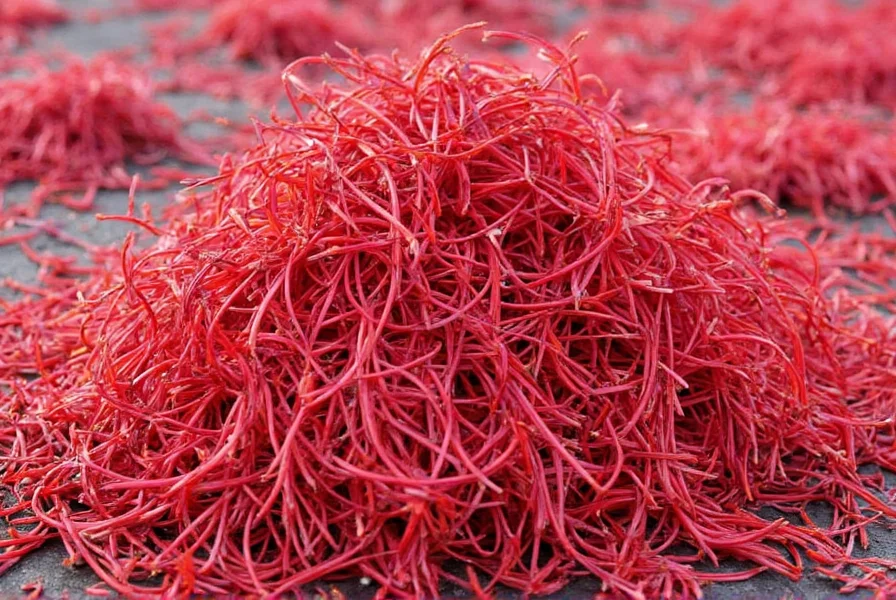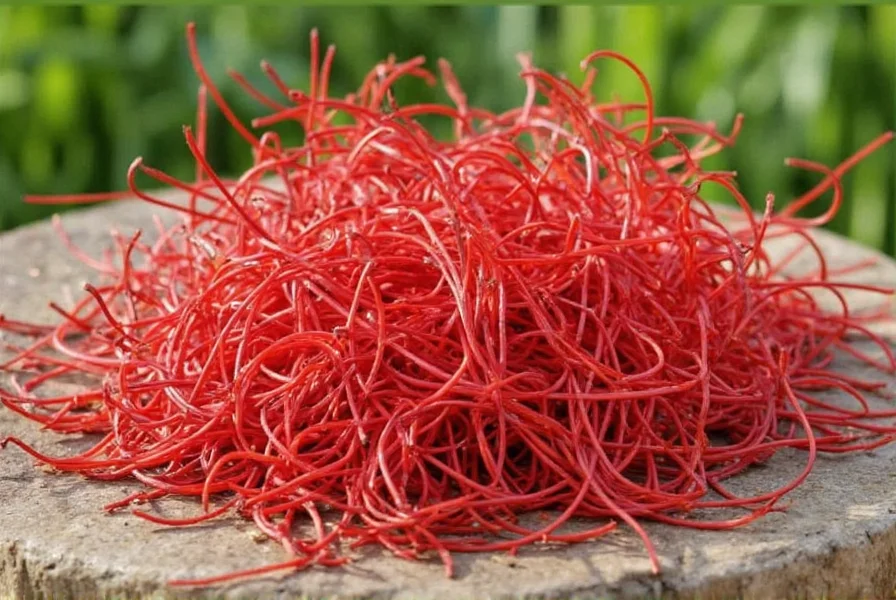Growing saffron may seem daunting, but with proper technique, you can cultivate this world's most expensive spice in your own garden. Saffron's high value stems from its labor-intensive harvesting process—each Crocus sativus flower yields just three precious red stigmas. This comprehensive guide provides actionable steps for successfully growing saffron, whether you're a home gardener or considering small-scale production.
Understanding Saffron and Its Value
Saffron isn't just a spice—it's the carefully harvested stigmas of the autumn-blooming Crocus sativus, a sterile triploid crocus that doesn't produce seeds. This unique characteristic means all propagation happens through corm division. Each saffron crocus flower produces only three threads, requiring approximately 150 flowers to yield just one gram of dried saffron. This labor-intensive process explains why saffron commands such high prices in global markets.
Essential Growing Requirements for Saffron Crocus
Successful saffron cultivation depends on meeting specific environmental conditions. Unlike many garden plants, saffron crocus follows a unique growth cycle that differs from spring-blooming crocuses.
| Growing Factor | Optimal Conditions | Notes |
|---|---|---|
| Climate | Mediterranean (hot dry summers, cool wet springs, dry autumns) | Tolerates temperatures from -15°C to 38°C but needs dry periods during dormancy |
| Soil Type | Well-draining sandy or loamy soil | pH 6-8; amend heavy clay with sand or perlite |
| Sun Exposure | Full sun (6+ hours daily) | Essential for flower production and corm development |
| Water Needs | Moderate during growth, minimal during dormancy | Overwatering causes corm rot; drought-tolerant once established |
Step-by-Step Guide to Growing Saffron
1. Selecting Quality Corms
Start with healthy, disease-free corms approximately 2.5-3.5 cm in diameter. Larger corms produce more flowers. Purchase from reputable suppliers to avoid diseased or mislabeled bulbs. Look for firm, plump corms without mold or soft spots. For home growing, begin with 50-100 corms to assess viability in your climate before scaling up.
2. Preparing the Planting Site
Choose a location with excellent drainage and full sun exposure. Amend heavy soils with coarse sand or perlite to improve drainage—saffron crocus absolutely cannot tolerate waterlogged conditions. Raised beds work exceptionally well for saffron cultivation in areas with heavier rainfall. Test your soil pH and amend if necessary to achieve the ideal 6-8 range.
3. Planting Your Saffron Corms
Plant corms in late summer (August-September in the Northern Hemisphere) when soil temperatures begin to cool. Place corms 3-4 inches deep with the pointed end facing up, spacing them 4-6 inches apart. In colder climates, plant slightly deeper (up to 6 inches) for winter protection. For container growing, use pots at least 6 inches deep with excellent drainage.
4. Watering and Maintenance
Water thoroughly after planting, then allow the soil to dry somewhat before watering again. During active growth (when leaves appear), maintain moderate moisture. Reduce watering as flowers develop. After flowering, gradually decrease watering as the plant enters summer dormancy. Overwatering is the most common cause of saffron cultivation failure.
5. Fertilization Strategy
Apply a balanced, low-nitrogen fertilizer when leaves emerge in fall. A second application of phosphorus-rich fertilizer during flowering can boost production. Avoid high-nitrogen fertilizers which promote leaf growth at the expense of flowers. Organic options like bone meal provide excellent phosphorus for flower development.
6. Harvesting Saffron Threads
Harvest flowers early in the morning when they first open. Carefully pluck entire flowers and bring them indoors for processing. Immediately remove the three red stigmas using tweezers or fingers—this must be done the same day as flowering. Wear white gloves to avoid staining and to keep the delicate threads clean. Each flower yields only three threads, making this process extremely labor-intensive.

7. Drying and Storing Saffron
Spread harvested threads on a clean paper towel in a warm, dark, well-ventilated area. Alternatively, use a food dehydrator at the lowest setting (less than 110°F/43°C). Properly dried saffron should be brittle but retain its deep red color. Store in an airtight container away from light and moisture. Well-preserved saffron maintains quality for 2-3 years.
Common Challenges in Saffron Cultivation
Growing saffron presents several challenges that can impact your yield:
- Corm rot: Caused by overwatering or poor drainage. Prevent by ensuring excellent soil drainage and avoiding irrigation during dormancy.
- Pests: Rodents sometimes dig up corms. Use hardware cloth barriers or plant in protected containers.
- Disease: Fungal infections can occur in humid conditions. Rotate planting locations every 3-4 years.
- Low flower production: Often results from insufficient sunlight, improper planting depth, or inadequate dormancy period.
Yield Expectations for Home Growers
Manage your expectations when growing saffron. First-year yields are typically modest as corms establish themselves. Here's what home growers can realistically expect:
| Year | Flowers per 50 Corms | Approx. Saffron Yield | Notes |
|---|---|---|---|
| Year 1 | 25-40 | 0.05-0.08g | Corms establishing root system |
| Year 2 | 60-100 | 0.12-0.20g | Increased production as corms multiply |
| Year 3+ | 100-150+ | 0.20-0.30g+ | Peak production with established corm bed |
Remember that commercial saffron production requires approximately 150,000 flowers to produce one kilogram of dried saffron. While home growing won't make you rich, the satisfaction of harvesting your own saffron—and the superior quality compared to store-bought—makes it worthwhile for culinary enthusiasts.
Tips for Maximizing Your Saffron Harvest
Implement these professional techniques to improve your saffron yield:
- Allow foliage to die back naturally after flowering—this replenishes corm energy for next year
- Dig and divide corms every 3-4 years to prevent overcrowding
- In colder climates, apply a light mulch after ground freezes for winter protection
- Keep detailed records of planting dates, yields, and conditions to refine your technique
- Consider growing in containers if your soil drainage is poor

Conclusion: The Reward of Growing Your Own Saffron
Growing saffron requires patience and attention to detail, but the reward of harvesting your own premium spice makes the effort worthwhile. By following these guidelines for planting, care, and harvesting, you can successfully cultivate saffron even in a home garden setting. Remember that saffron production is a long-term endeavor—yields improve as your corm bed establishes itself over several years. The distinctive aroma and flavor of home-harvested saffron far surpasses most commercially available products, making it a valuable addition to any serious cook's garden.
Frequently Asked Questions
How long does it take to grow saffron from planting to harvest?
From planting to first harvest takes approximately 6-8 weeks. You plant saffron corms in late summer (August-September in the Northern Hemisphere), and flowers typically appear 4-6 weeks later in the fall. The entire process from planting to dried saffron threads ready for use takes about 2 months, though corms take 3-4 years to reach peak production.
Can you grow saffron indoors or in containers?
Yes, saffron grows well in containers with proper drainage. Use pots at least 6-8 inches deep with multiple drainage holes. A soil mix of 60% potting soil and 40% perlite or coarse sand works well. Place containers in a sunny location (south-facing window or greenhouse). Container growing allows better control of soil conditions and makes overwintering easier in colder climates. Just ensure plants receive adequate sunlight during the growing season.
How much saffron can you realistically grow in a home garden?
A home garden with 50-100 corms typically yields 0.1-0.3 grams of dried saffron annually—enough for 5-15 dishes depending on recipe intensity. While this won't replace commercial sources, it provides high-quality saffron for personal use. Remember that each flower produces only three threads, and it takes approximately 150 flowers to yield one gram of dried saffron. Most home growers find even small harvests valuable due to the superior freshness and quality compared to store-bought saffron.
What's the best time of year to plant saffron corms?
The optimal planting time for saffron corms is late summer to early fall, typically August through September in the Northern Hemisphere. This timing allows corms to establish roots before the fall flowering period. Plant when soil temperatures begin to cool but are still warm enough for root development (around 60-70°F or 15-21°C). In warmer climates (USDA zones 8-10), you can plant as late as October. Proper planting timing is crucial for synchronizing the plant's growth cycle with seasonal changes.
Why is my saffron crocus not flowering?
Several factors can prevent saffron crocus from flowering: insufficient sunlight (needs 6+ hours of direct sun), improper planting depth (too shallow or deep), overwatering causing corm rot, inadequate dormancy period, or corms that are too small or weak. First-year plantings often produce fewer flowers as corms establish themselves. Ensure your plants receive proper summer dormancy with minimal water, as this triggers the flowering cycle. It typically takes 2-3 years for newly planted corms to reach optimal flowering capacity.











 浙公网安备
33010002000092号
浙公网安备
33010002000092号 浙B2-20120091-4
浙B2-20120091-4